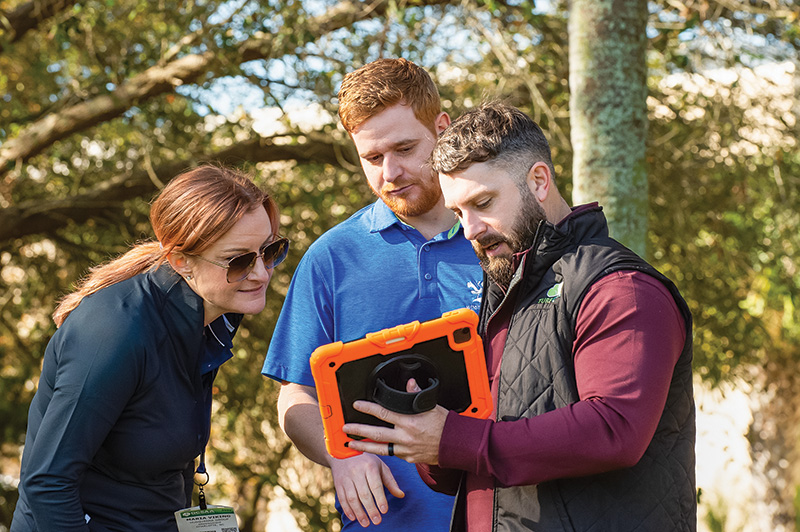
Innovation isn’t about fixing what’s broken, it’s about making the good even better. It keeps organizations sharp, employees engaged and success within reach. Without it, work becomes a monotonous loop of “we’ve always done it this way.” But when innovation takes the wheel, new possibilities unfold, efficiency skyrockets, motivation soars, and adaptability and flexible thinking become second nature.
Whether it’s sparking genius in brainstorming sessions or rethinking old routines, an innovative workplace is where the magic happens. A leader’s role is to create a healthy environment that celebrates individuals’ achievements, reflects their interests, encourages collaboration, accepts a degree of risk taking and allows time to drive the creative thought processes of their team.
When teams embrace innovation, they create an atmosphere for:
- Stimulating positive change.
- Ensuring continuous improvement.
- Making the team more adaptable.
- Ensuring you exceed customer needs.
- Enhancing problem-solving.
- Improving employee engagement.
- Attracting top talent.
One of your main functions of being the leader is to act as an enabler, one who creates structures and processes so that innovation can happen. The most important attribute of a successful, innovative leader is the ability to believe in the ideas their team is generating, as well as in their team’s ability to implement those ideas. Leaders rely on the team that’s around them to creatively solve the problems within their department. A leader must prove they’re championing each stage of the innovation process, allowing their team to solve problems and deliver constructive ideas. Your role, therefore, is wide ranging.
Leaders must appreciate that people approach innovation in two ways: Adaptors improve existing ideas, making things more efficient, while innovators challenge the norm, creating bold, new solutions. Both are essential: Adaptors refine, innovators disrupt. Understanding this helps teams work better, balancing stability and creativity for real progress.
To help discover which style you feel more comfortable, adopting the Kirton Adaption-Innovation Inventory is a great tool to help understand your best style. This theory is a psychological assessment that measures an individual’s preferred problem-solving and creativity styles, as it places people on a spectrum from adaptors (who prefer structured, incremental improvements), to innovators (who challenge norms and seek radical change).
For more information on the KAI, visit https://kai.foundation/.
From experience of leading many teams of different sizes, I have realized that great ideas don’t always start as groundbreaking revelations. They often begin with small, simple improvements. The key is to embrace curiosity, question existing methods and build on what already works. Start with minor refinements, adjusting a process for efficiency, streamlining communication or adding a fresh perspective. Then, expand thinking by brainstorming bold, limitless possibilities, daring to challenge conventions. The real magic happens when small improvements evolve into game-changing ideas. I discovered that using a visual “WOW Wheel” was a great way to support my team’s individuals to understand the concept of starting small and building their ideas.
A WOW Wheel looks like a basic target made of concentric circles. At the center — the bull’s-eye — are the tiny noticeable things, surrounded by brilliant basics and, finally, “Sky’s the limit.”
Sky’s the limit: dreaming big, pushing boundaries and embracing limitless creativity and possibilities.
Brilliant basics: simple yet impactful solutions that improve efficiency, clarity and everyday innovation.
Tiny noticeable things: small gestures that enhance customer experience, like warm greetings and quick responses (a simple wave or smile goes a long way).
A sure-fire way to light the fire of innovation in your team is to lead by example. Show enthusiasm for new approaches and challenge outdated processes. Recognize and reward innovative efforts, reinforcing the mindset that bold ideas matter. Remove unnecessary bureaucracy that stifles creativity and support continuous learning through workshops or brainstorming sessions. When teams feel empowered to take risks, innovation becomes a natural, thriving part of work.
Innovation isn’t a skill, it’s a mindset, so go ahead, think big, think bold, think brilliant.
Phil Helmn, MG, has gained more than 35 years’ experience in sports turf management. He is a university lecturer and recognized as a leading industry management specialist. He is a regular speaker on leadership and management and the author of “The Power of People,” which offers tips for managing the modern-day team.